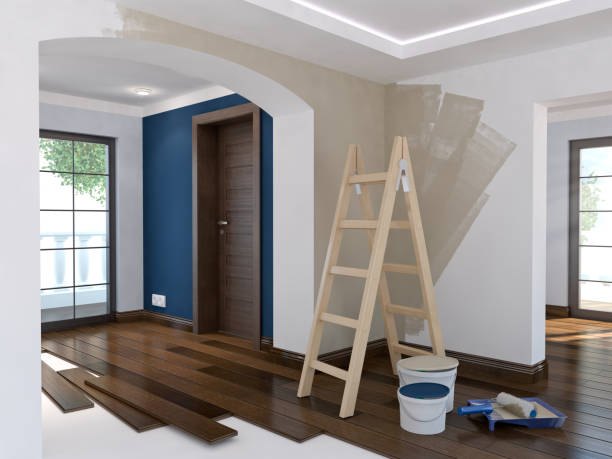
**Color Trends and Eco-Friendly Options:**
Posted by on 2024-01-10
Color trends in design and fashion often reflect the broader societal shifts and environmental consciousness that permeate our world. As we move through the decades, colors ebb and flow in popularity, but a growing trend is the intersection of aesthetic appeal with eco-friendly practices. Designers and consumers alike are increasingly mindful of the environmental impact associated with their choices, leading to an uptick in demand for both sustainable materials and production methods that prioritize planetary health.
At first glance, one might not immediately see how color trends connect to ecological considerations. However, upon closer examination, it becomes apparent that the colors chosen by designers can indeed have far-reaching consequences on sustainability. For instance, natural dyes derived from plants or minerals offer a palette that not only harmonizes with contemporary tastes but also reduces chemical waste and water pollution typically associated with synthetic dyes.
As we navigate through this era of heightened environmental awareness, color trends are reflecting a desire for authenticity and reconnection with nature. Earth tones like lush greens, rich browns, warm terracottas, deep blues of oceanic depths, and sandy neutrals resonate strongly as they evoke a sense of calmness and grounding — qualities yearned for in an often tumultuous modern existence. These hues complement eco-friendly materials such as organic cotton, recycled polyester, bamboo fibers, and biodegradable plastics which are gaining traction within various industries.
In addition to these earthy shades becoming more prevalent in our wardrobes and living spaces, there's also a movement toward pastel tones that carry connotations of softness and serenity. Pale pinks reminiscent of rose quartz crystals; subtle lavenders like those found in early morning skies; gentle aquas mirroring shallow coastal waters – all convey an understated elegance while promoting tranquility.
Moreover, advancements in technology allow us to develop new pigments that require less energy consumption during production processes without compromising vibrancy or longevity. Such innovations align well with a society eager for solutions that do not sacrifice quality for sustainability.
As consumer values evolve towards greater ecological responsibility paired with aesthetic sophistication; brands must adapt by offering products that satisfy both criteria effectively—colorful yet environmentally considerate options will likely dominate market preferences moving forward.
In conclusion, the interplay between color trends and eco-friendliness represents much more than mere style evolution — it underscores a collective aspiration towards creating a world where beauty coexists harmoniously with ethical stewardship of our shared environment. It signals hopefulness: A belief that even within realms seemingly as superficial as fashion or interior design; there lies potential for meaningful change towards global betterment.
At first glance, one might not immediately see how color trends connect to ecological considerations. However, upon closer examination, it becomes apparent that the colors chosen by designers can indeed have far-reaching consequences on sustainability. For instance, natural dyes derived from plants or minerals offer a palette that not only harmonizes with contemporary tastes but also reduces chemical waste and water pollution typically associated with synthetic dyes.
As we navigate through this era of heightened environmental awareness, color trends are reflecting a desire for authenticity and reconnection with nature. Earth tones like lush greens, rich browns, warm terracottas, deep blues of oceanic depths, and sandy neutrals resonate strongly as they evoke a sense of calmness and grounding — qualities yearned for in an often tumultuous modern existence. These hues complement eco-friendly materials such as organic cotton, recycled polyester, bamboo fibers, and biodegradable plastics which are gaining traction within various industries.
In addition to these earthy shades becoming more prevalent in our wardrobes and living spaces, there's also a movement toward pastel tones that carry connotations of softness and serenity. Pale pinks reminiscent of rose quartz crystals; subtle lavenders like those found in early morning skies; gentle aquas mirroring shallow coastal waters – all convey an understated elegance while promoting tranquility.
Moreover, advancements in technology allow us to develop new pigments that require less energy consumption during production processes without compromising vibrancy or longevity. Such innovations align well with a society eager for solutions that do not sacrifice quality for sustainability.
As consumer values evolve towards greater ecological responsibility paired with aesthetic sophistication; brands must adapt by offering products that satisfy both criteria effectively—colorful yet environmentally considerate options will likely dominate market preferences moving forward.
In conclusion, the interplay between color trends and eco-friendliness represents much more than mere style evolution — it underscores a collective aspiration towards creating a world where beauty coexists harmoniously with ethical stewardship of our shared environment. It signals hopefulness: A belief that even within realms seemingly as superficial as fashion or interior design; there lies potential for meaningful change towards global betterment.